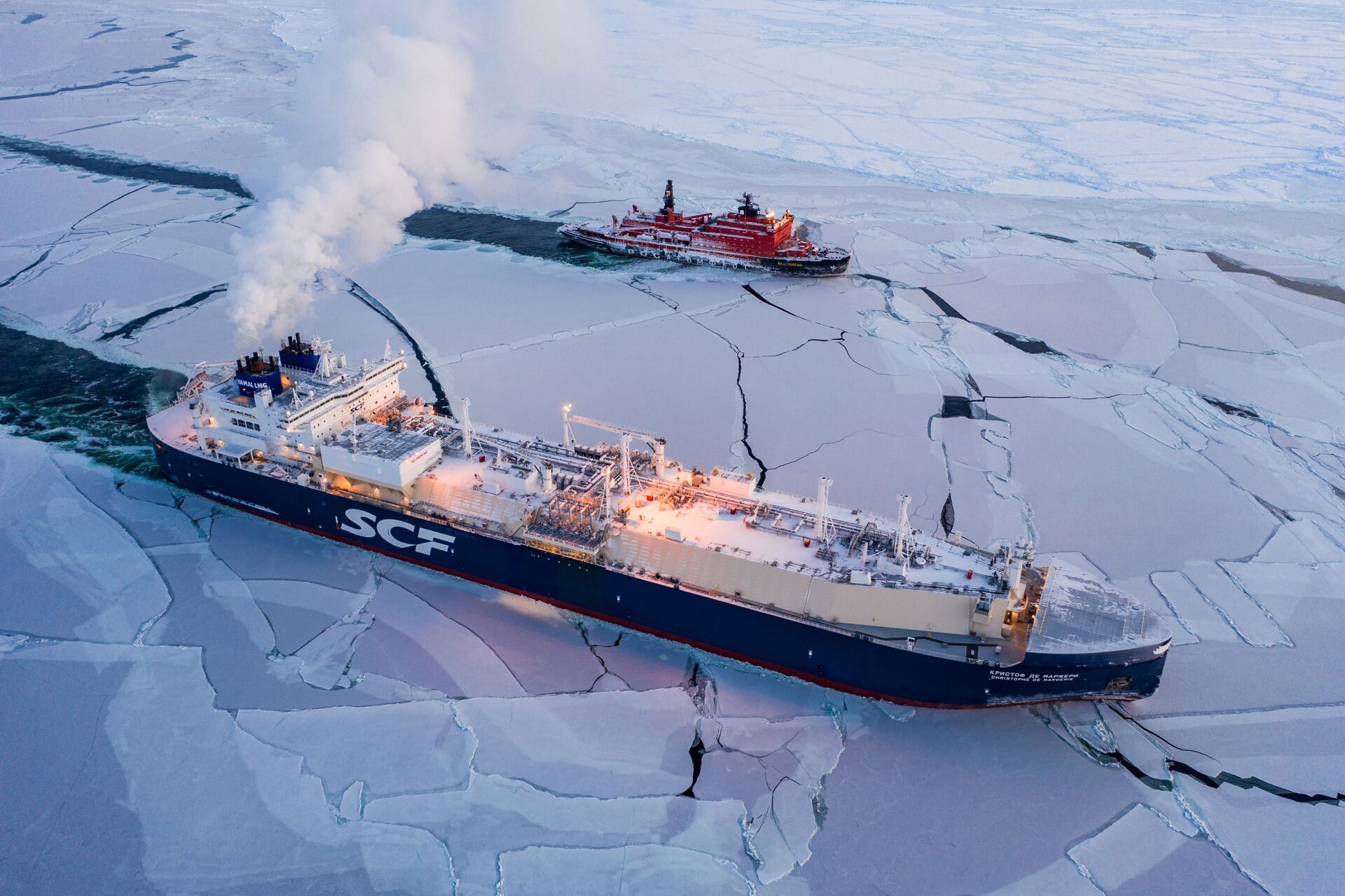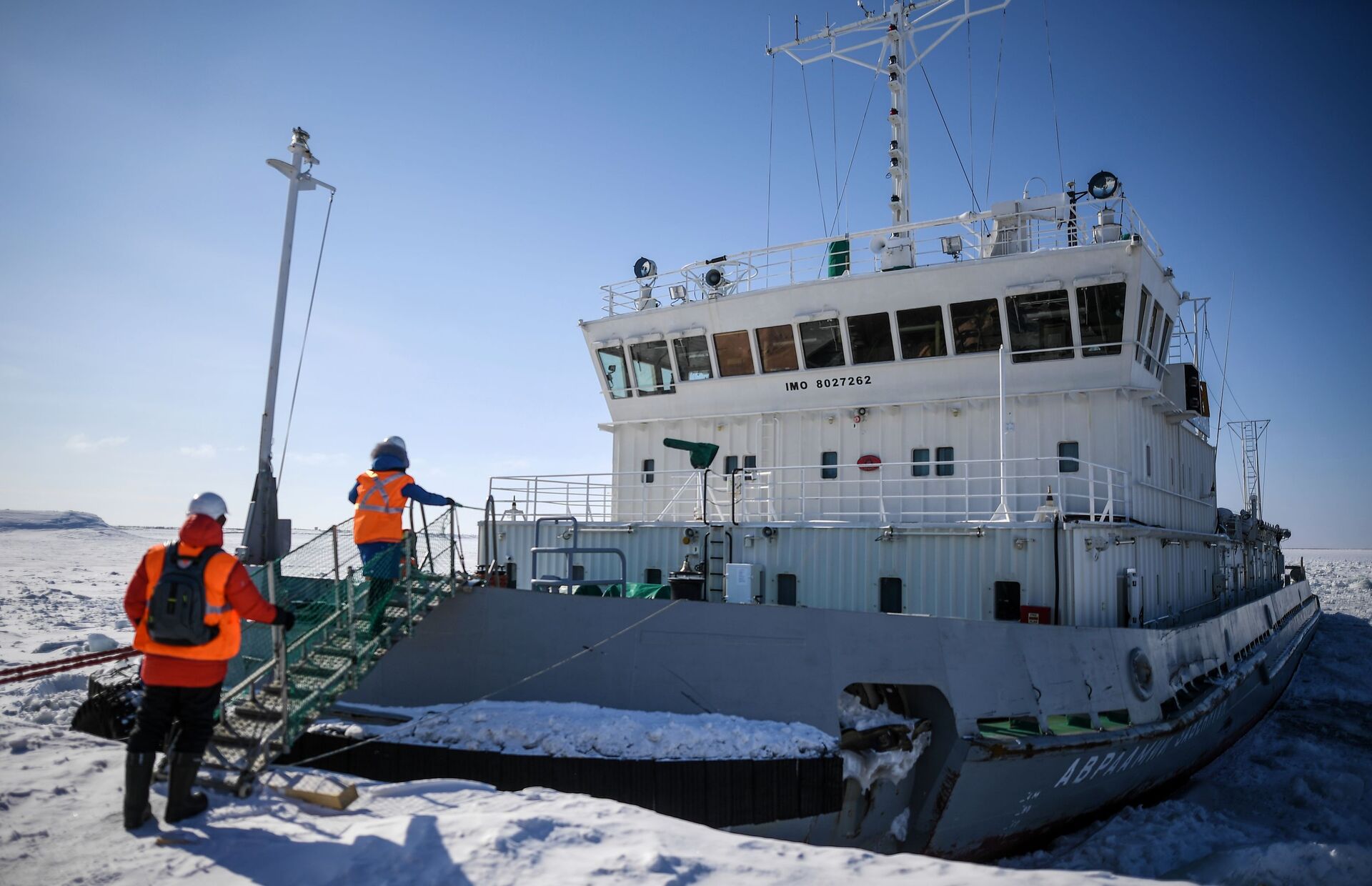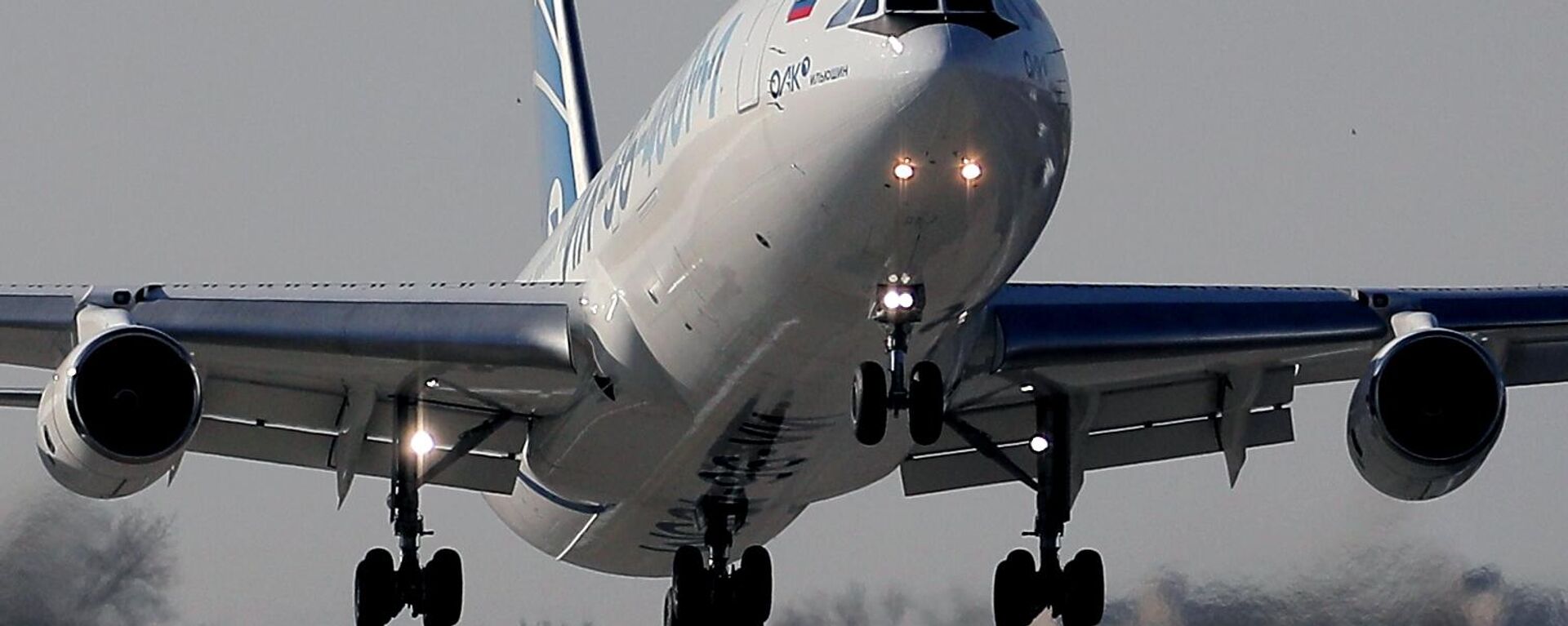Russia’s ‘Eye in The Sky’ Safeguards India’s Arctic Interest

© Photo : Roscosmos State Space Corporation
Subscribe
In his column for Sputnik India, military analyst Vijainder K Thakur, divulges the connection between Russia's space policy and cooperation with India on the Northern Shipping Route.
On December 16, 2023, Russia's Roscosmos launched the second satellite of the planned Arktika-M satellite constellation into a Molniya orbit from the Baikonur cosmodrome using a Soyuz-2.1b launcher with a Fregat upper stage. (A Molniya orbit is a highly elliptical orbit with an inclination of 63.4 degrees designed to provide communications and remote sensing coverage over high latitudes.)
Monitoring the Northern Sea Route
The Arktika-M satellite constellation is devoted to monitoring the Northern Sea Route (NSR). The first Arktika-M satellite was launched on February 28, 2021. The two Arktika-M satellites now in orbit will provide round-the-clock monitoring of the Earth's surface and clouds, as well as the seas in the Arctic.
Russia plans to add two more Arktika satellites to the constellation by 2031. According to the head of the Russian Academy of Sciences, Alexander Sergeev, when the number of satellites in orbit reaches four, the constellation will facilitate monitoring the Arctic every 15 minutes with good spatial and temporal resolution and receiving up to two million images per year.
According to a Russian news agency, in 2026, Roscosmos will start developing a new generation of Arktika-MP devices with a larger number of spectral channels, providing improved spatial resolution and qualitatively new information about high-latitude Arctic regions.

The launch of the Progress MS-25 cargo ship on a Soyuz-2.1a carrier rocket from the Baikonur Cosmodrome on December 1, 2023.
© Photo : Roscosmos
The Importance of the Northern Sea Route
The NSR is a shipping route about 5,600 kilometres long, defined by Russian legislation as running from the entrances to the Novaya Zemlya straits in the west, along the Russian Arctic coast above Siberia through the Kara Sea, Laptev Sea, East Siberian Sea, and Chukchi Sea, to Cape Zhelaniya on the Bering Strait.
The NSR is Russia’s main trade route across the Arctic Zone of the Russian Federation (AZRF). The entire route lies in Arctic waters and within Russia's exclusive economic zone. Much of it runs through Russian territorial waters. Some parts of the route are only free of ice for two months per year.

Sovcomflot LNG ship Christophe de Margerie and Russian icebreaker 50 Let Pobedy traverse the Northern Sea Route in February 2021, the first commercial cargo vessel to do so
Russia's Rosatom operates a fleet of six powerful nuclear icebreakers and a fleet of ice-capable tugs to move cargo along the NSR. Rosatom organises the navigation of vessels in the waters of the NSR in accordance with the Merchant Shipping Code. It ensures safe uninterrupted operations, provides navigation and hydrographic support as well as port services for gas tankers in case of unfavourable weather conditions.
Rosatom also develops the infrastructure of sea ports to support the NSR and manages the state property of these ports.
Impact of Global Warming
The melting of Arctic ice caps due to global warming is likely to increase the commercial viability of the NSR for trade between Asia and Europe, because the NSR is significantly shorter than the existing sea routes from Asia to Europe through the Suez Canal.
However, currently, trade through the Suez Canal accounts for 98% of cargo movement between Europe and Asia because of the perception that notwithstanding the shorter distance, traversing the NSR transit entails environmental risks and increased operating costs.
The perception is very likely flawed because it does not factor in reduced CO2 emissions due to the shorter distance, absence of transit charges (Egypt earns an average of $25-30 million daily from shipping fees and services associated with Suez Canal transit) and lesser insurance due to absence of piracy along the route.

An army zodiac secures the entrance of a new section of the Suez Canal in Ismailia, Egypt, Aug. 6, 2015.
© AP Photo / Amr Nabil
Increase in NSR Traffic
During 2018-2022, the growth in NSR cargo traffic was around 73%. In September 2023, Alexei Chekunkov, the head of Russia's Ministry for the Development of the Russian Far East and Arctic, told RBC media that 34 million tons of cargo were supplied via the NSR in 2022, with the same amount expected in 2023. Russia ambitiously plans to more than double the amount to 80 million tons next year, and to 200 million tons by 2031.
According to reports, Indian cargo comprised 35% of the 8 million tonnes handled at Murmansk Port in the first seven months of 2023.
Russian Security Concerns
Russia perceives a threat to the NSR because it's encircled in the zone by NATO and its allies – a perception that has become even more acute from the recent accession of Finland and Sweden to NATO.
Also, Russia fears that with global warming, human activity will increase in the Arctic region posing a greater threat to the AZRF in general and the NSR in particular. Hitherto, Russia derived a sense of security from sea ice that played the role of a natural border for the AZRF. With the ice melting, Russia will have to exercise AZRF perimeter control and enforce its sovereignty.
Russian President Vladimir Putin has put a high priority on increasing traffic on Russia's Northern Sea Route (NSR), including development of year-round navigation.
India's NSR Interest
The EU is India's third largest trading partner. In 2021, trade between the two entities was €88 billion, or 10.8% of total Indian trade, after the USA (11.6%) and China (11.4%).
India's trade with Russia is burgeoning because of increased oil, coke and fertiliser imports. In 2022, the trade turnover between the two countries amounted to $39 bln.
Russian ambassador to India Denis Alipov said at the plenary session of the XIV Indian-Russian Business Dialogue, "According to Indian statistics, the mutual trade turnover has already reached almost $55 b, to be precise, 54.7 b in the first 10 months of this year," he said.
A significant percentage of India's trade with Russia and the EU could be routed along the NSR reducing transportation costs. The NSR can be up to 50% shorter than the alternative routes through Suez. Another advantage of the NSR is that it facilitates trade from India's eastern seaboard in addition to the western seaboard.
During the 8th Eastern Economic Forum 2023 on 10–13 September 2023 in Vladivostok, India and Russia discussed the possibility of exploring new transport corridors like the Northern Sea Route (NSR) and the Eastern Maritime Corridor (EMC) between Vladivostok and Chennai. The two countries agreed to train Indian sailors to navigate Polar and Arctic waters at the Russian Maritime Training Institute in Vladivostok, using simulators.
Alexei Chekunkov said, "Cooperation with the Republic of India is one of the priorities of the international activities of our Ministry; we intend to develop relations with Indian partners in the Far East in all areas of mutual interest."
The alternate routes suited trade in coking coal, oil, LNG and fertilisers which are present in sufficient quantities in the Far East.
Chekunkov said that the NSR is not just a Russian transport project but added that “its development can benefit both Russia and non-regional states. For India, it represents an opportunity to increase sales of shipbuilding products and participate in the logistics business in northern latitudes.”
Indian Manufactured Ice Class Ships
In September 2023, it was reported that Russia is seeking shipbuilding support from India and China to build ice class ships in order to increase the number of ships transiting through its Northern Sea Route (NSR).
Ice class ships are strengthened to operate in difficult ice conditions. Top class ice ships can navigate through ice mostly without icebreaker assistance. Lower class ice ships need icebreaker assistance.
Russian plans envisage a fleet of 50 ice-class and Icebreaker ships by 2035, a number that is definitely beyond the reach of the Russian shipbuilding industry as of now.
According to Alexei Chekunkov, “India is interested in working together to develop northern navigation and potentially in joint shipbuilding . . . Somewhere together we will be able to produce an ice-class fleet in sufficient quantities.”

The Avraamy Zavenyagin icebreaker at the seaport of Dudinka. The federal Arctic port on the Northern Sea Route Dudinka is the largest in Siberia and the northernmost international seaport in Russia.
© Sputnik / Vladimir Astapkovich
/ Conclusion
Russia is clearly determined to break free of its excessive dependence on the West for trade. Russia's pivot to the East is strategic in nature and going by its investments in the NSR, enduring. Through increased oil imports, India has already gained substantially from the Russian reorientation. India stands to gain much more from the lower cost of trading through the NSR and building ice class merchant vessels for the NSR. With Russia's Sberbank improving its ability to convert rupees into rubles despite Western sanctions, trade between India and Russia is set to get smoother and lead to increased volumes.

